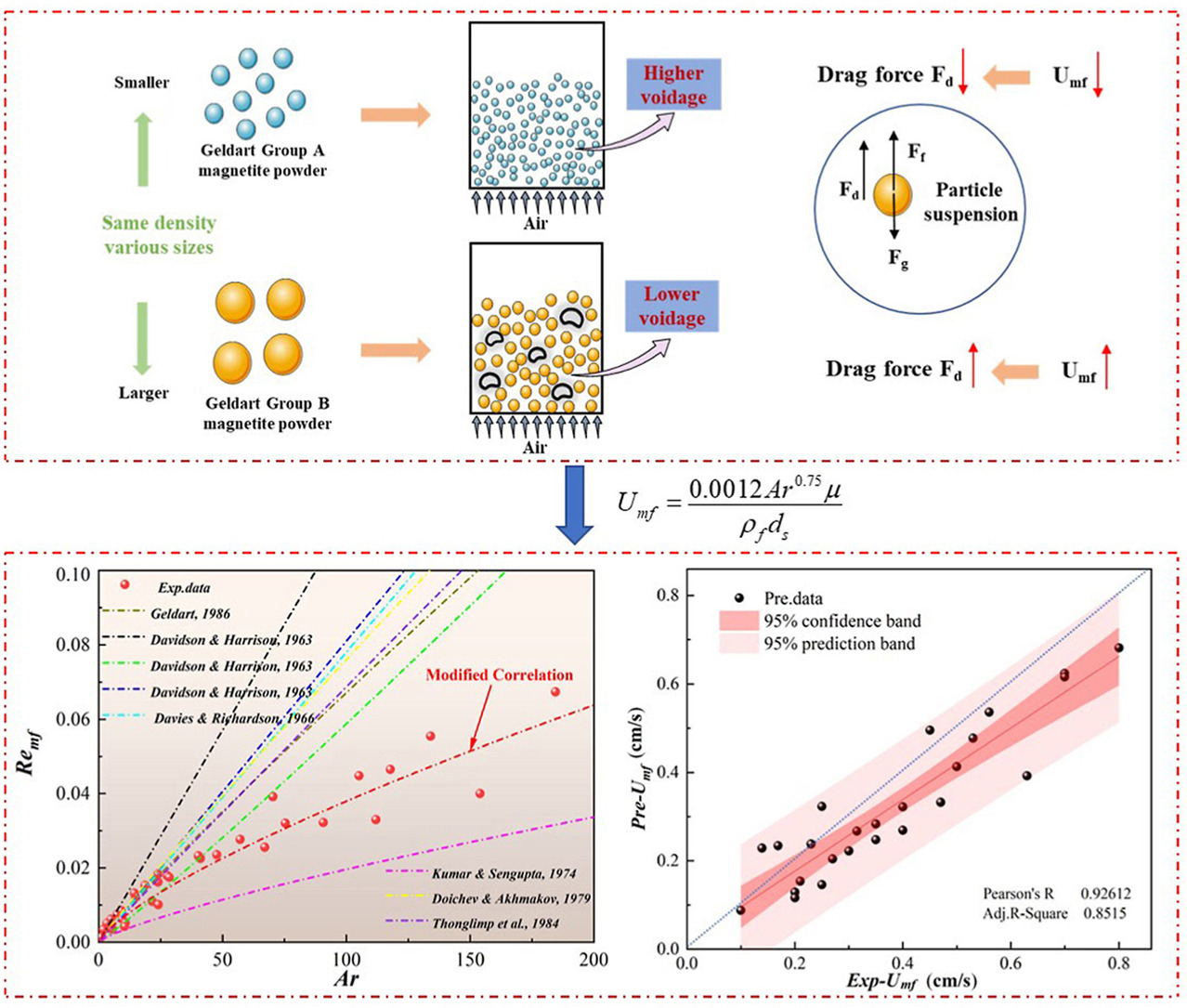• A modified model for predicting minimum fluidization velocity of Geldart A particle is proposed.
• The prediction model has high accuracy with an overall error of less than 0.2 cm/s.
• A theoretical guide for optimization and design of coal separation processes is provided by the model.
The minimum fluidization velocity is a pivotal parameter in the study of fluidization behavior within air dense medium fluidized beds, significantly affecting the design and operational efficiency of these systems. This research explores the fluidization characteristics of Geldart A magnetite particles and Geldart B magnetite powder particles through experimental investigations. The results show that the minimum fluidization velocity of Geldart A and Geldart B particles differs due to both particle size and density. Operating conditions, such as gas distribution uniformity and flow rate fluctuations, also have a significant impact. These findings offer valuable guidance for improving the design and operation of fluidized bed reactors. To accurately estimate the minimum fluidization velocity of Geldart A magnetite powder particles, this study extends classical equations and introduces new correlation coefficients. A summarized and analytical comparison of literature data and experimental results data demonstrate that the proposed correlation coefficients are both accurate and reliable within the defined range, with a prediction error of less than 0.2 cm/s when validated against literature and experimental data. This study furnishes experimental evidence and theoretical insights into the fluidization behavior of diverse particle types, thereby facilitating the optimization of fluidized bed design.

